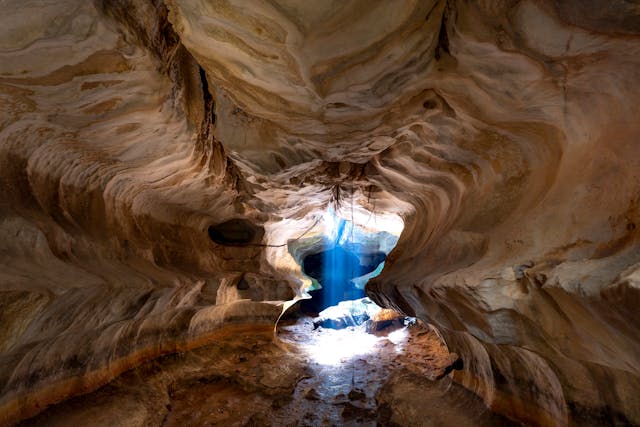Far below the surface of our planet, where sunlight cannot reach and crushing pressure dominates, scientists have uncovered a hidden world of life that challenges everything we thought we knew about Earth’s biodiversity.
This extraordinary discovery reveals that life thrives in places once believed inhospitable—miles beneath Earth’s crust. The findings open new possibilities for understanding survival, evolution, and even the search for extraterrestrial organisms.
Table of Contents
The Discovery of a Hidden World of Life
Researchers drilling deep into Earth’s crust have revealed microbial communities flourishing in extreme conditions. These organisms live in vast underground ecosystems that stretch for miles, forming what experts now call the deep biosphere. This hidden world of life consists of bacteria, archaea, and fungi that survive without sunlight, relying instead on chemical reactions within rocks and minerals for energy.
Scientists estimate that nearly 70% of all microbes on Earth exist below the surface in this underground realm—making it one of the largest ecosystems ever documented. This astonishing statistic redefines the very boundaries of life.
How Life Survives Without Sunlight

The hidden world of life deep underground thrives in a way unlike anything seen on the surface. Instead of photosynthesis, these organisms depend on a process called chemosynthesis, where microbes generate energy from chemical interactions with hydrogen, methane, and other compounds trapped in rocks.
Temperatures in these environments can reach over 120°C (248°F), yet extremophiles—organisms adapted to survive extreme conditions—continue to flourish. Their resilience has baffled scientists and raised questions about the true limits of life.
Why This Discovery Matters
The existence of a hidden world of life beneath Earth’s crust is not just a biological curiosity—it has profound implications.
- Biodiversity Expansion: It increases the estimated biomass of Earth, suggesting our planet is more alive than ever imagined.
- Origins of Life: Studying these organisms could provide clues to how life began on Earth billions of years ago.
- Astrobiology Insights: If life can survive in the crushing depths of Earth, it raises the possibility of similar ecosystems existing beneath the surfaces of Mars, Europa, or Enceladus.
As one researcher noted, “If life can thrive miles below Earth’s crust, it could just as easily thrive beneath the icy crust of distant worlds.”
The Hidden World of Life and Future Exploration
Scientists are now planning more ambitious drilling projects to map and analyze this vast subterranean ecosystem. With each new discovery, the hidden world of life is reshaping our perception of habitability, showing that life is not limited to the familiar environments on Earth’s surface.
This groundbreaking research may help humanity prepare for future space exploration, offering a blueprint for identifying signs of life in the most unlikely places.
FAQs About the Hidden World of Life
What is the hidden world of life?
The hidden world of life refers to microbial ecosystems found deep beneath Earth’s crust, thriving in extreme conditions without sunlight.
How do organisms survive without sunlight?
They use chemosynthesis, extracting energy from chemical reactions within rocks and minerals instead of photosynthesis.
How large is this underground ecosystem?
It is estimated to contain up to 70% of Earth’s total microbial life, making it one of the largest ecosystems ever discovered.
Why is this discovery important for space exploration?
It suggests that life can exist in extreme, hidden environments—making the possibility of extraterrestrial life on planets like Mars or moons like Europa much more likely.
What’s next for research into the hidden world of life?
Future drilling and sampling projects will explore deeper layers of Earth’s crust, seeking to map the extent and diversity of this underground biosphere.
Conclusion
The discovery of a hidden world of life beneath Earth’s crust is more than a scientific breakthrough—it’s a revelation that expands our understanding of biology, evolution, and the resilience of life itself. As researchers continue their journey into this unseen realm, one thing becomes clear: life is far more adaptable, enduring, and widespread than we ever dared to believe.
For more groundbreaking discoveries and updates, visit www.documentarytimes.com.